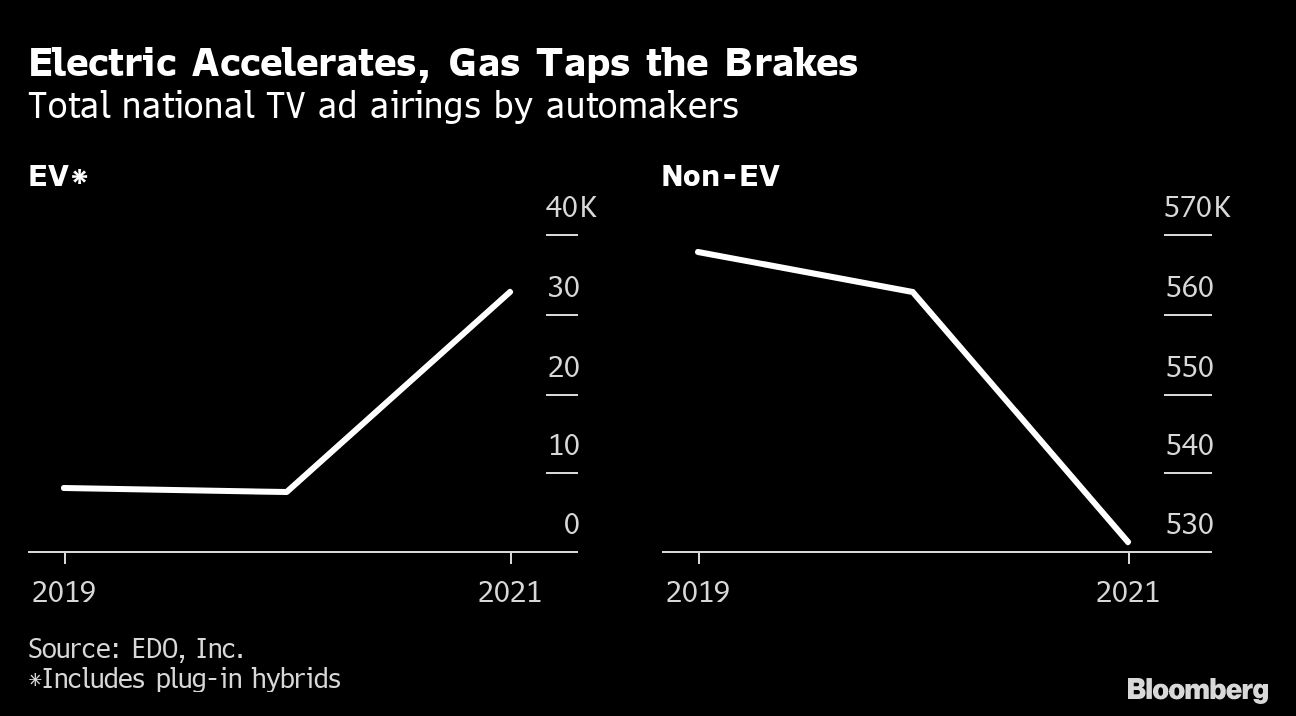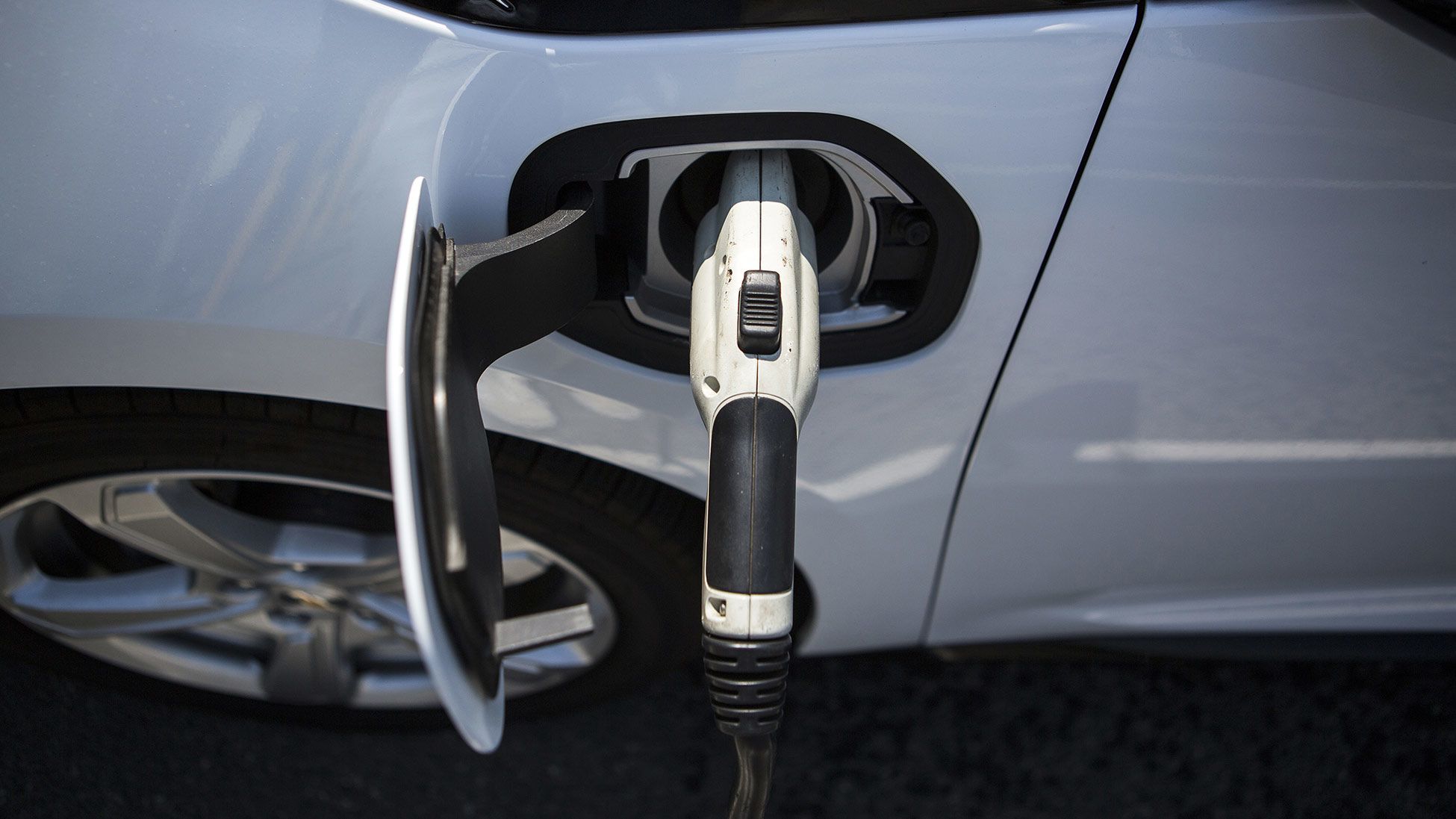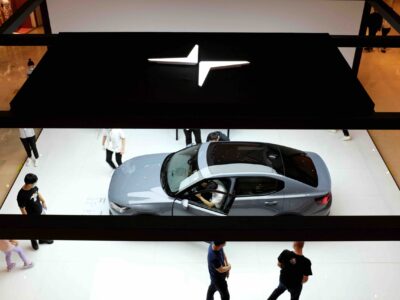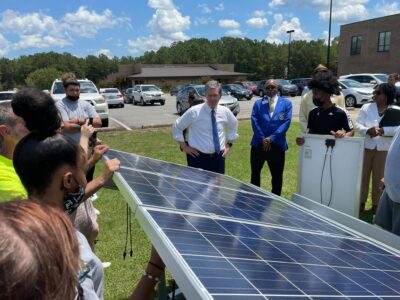(Bloomberg) —
If you watched NBC’s Sunday Night Football in the fall, you might have seen a Hyundai ad called “Gas Card.” It goes like this: a dad gives his daughter a gas station gift card; she never uses it because she drives a plug-in hybrid Tucson from Hyundai; she gives the card back to him on his birthday. The style, as with the other spots in Hyundai’s campaign for its new electrified SUVs, will be familiar to any regular viewer of American television: A bit of light humor unfolds in some sunny place where yards are well-manicured, traffic is light, and neighbors are friendly.
“We want it to feel like it’s part of our brand,” says Angela Zepeda, chief marketing officer for Hyundai Motor America. “We’re trying to grab a little bit of their heart or their funny bone.”
Why wouldn’t your car connect to an outlet?! Evolve your journey beyond the pump in the first-ever #SantaFePHEV pic.twitter.com/3XUAIyIlBi— Hyundai USA (@Hyundai) November 4, 2021
The Hyundai campaign was part of a watershed year for electric vehicle advertising. Many of the major automakers, for the first time, began giving plug-ins the kind of nationwide push typically reserved for their best-selling combustion engine models.
Car brands collectively ran four times as many national television ads for EVs in 2021 as they did in either of the previous two years. General Motors Co., Ford Motor Co., and Volkswagen AG, among others, spent an estimated $248 million on nearly 33,000 spots, up from $83 million spent on 8,000 commercials in 2019, according to data from marketing analytics startup EDO, Inc. Meanwhile, ads for traditional models slid by more than 35,000 airings, with automakers lowering their national TV budgets from an estimated $3.8 billion in 2019 to $3.1 billion in 2021.
At General Motors, for example, the EV ad plan has three stages, according to Chief Marketing Officer Deborah Wahl: normalize, personalize and mesmerize. “The accelerator of EV consideration is much faster than we thought,” she says. “In our minds, we’re already past normalize.”
The quick shift to electric marketing was partly a knock-on effect of disruptions in the supply chain, according to EDO president and CEO Kevin Krim. Automakers typically split their national ad budgets between annual sales events (“December to Remember”), new model launches, and brand burnishing (“Built Ford Tough”). In 2021, with internal combustion engine cars in short supply, brands pulled back on the first two categories — Why tell consumers to hurry in today for a car that’s not there? — and used their airtime, often paid for long in advance, to begin nudging buyers to think electric.
“It’s really striking that, even though everyone saw electric coming for a long, long time, no one was really messaging it at any scale,” says Krim, “until suddenly you don’t have any conventional cars, so you might as well sell the future.”

Once automakers began dipping their toes in the water, they found a warm response from consumers. EDO tracks online searches for brands and products to measure how ads perform. Typically, when an ad airs, some portion of viewers will look online for more information. EV ads, says Krim, outperform traditional car spots on this score. Viewers who saw an ad for an Audi EV, for instance, were 90% more likely to search for the brand online than viewers who saw an ad for one of the brand’s combustion engine models.
Audi made the most dramatic shift. Over the past three years, its ad allocation has flipped from majority combustion engine to majority EV. In 2019, the German brand spent an estimated $22 million on nationwide EV ads and $56 million for traditional models. In 2021, it spent $54 million on EVs and $13 million on the remainder.
For Audi, the switch is an existential imperative, according to Jessica Thor, the company’s director of marketing campaign strategy. This year, the German automaker says it will offer more EV models than any other brand and it has committed to making its last combustion vehicle in 2026. “A lot of our research shows people look at EVs as their next next car purchase,” Thor says. “We’re trying to close that gap for them and show that they’re not really compromises.”
Until this year, the history of EV advertising has been defined by absence. Tesla, the market leader, famously doesn’t advertise and the legacy automakers mostly neglected the few electric models they offered. In many cases, EVs were money losers, so-called “compliance cars,” built to satisfy federal and state emissions requirements. Advertising was largely limited to digital inventory, direct mail, and other low-cost options targeted at consumers who had demonstrated an interest. If you were an early adopter in a state with an EV mandate for automakers, you might have been served an online banner, but that was about it.
“We really focused before on delivering messages more at a regional level,” says Hyundai’s Zepeda. “We were doing a lot of direct mail, a lot of e-mail, and social digital [ads].”
That is changing as the legacy brands are devoting more resources to building EVs that will entice a new kind of buyer. “Our strategy is different now because we are electrifying our icons,” says Karna Crawford, director of marketing communications at Ford, pointing to the recent launch of the Mustang Mach-E and the F-150 Lightning coming in the spring. “That means that we prioritize these vehicles as central to our marketing strategy.” In 2019, Ford aired fewer than 100 EV ads, according to EDO. In 2021, it tallied nearly 1,500.
Taking EVs mainstream will require educating consumers. “We’re not just assuming that people know about that technology and now they’re just comparison shopping,” says Zepeda, “It’s about teaching.” To use the industry jargon, the brands are all “selling the category”—trying to convince consumers that an EV is not a millstone keeping you from straying far from home, but a delightful new technology that allows you to skip the gas station. “It really isn’t about advertising,” Wahl, at GM, says, “it’s about creating a movement.”
Ford’s initial spots for the F-150 Lightning highlight the spacious front trunk and show owners using the truck to power their home during an outage. “Those features and functions are stories that you couldn’t tell when you were promoting ICE vehicles,” says Crawford.
Over time, if the ads work, brand will come before powertrain in the minds of consumers and, as more models come to market, the brands can get back to product differentiation. The surest sign that the EV market has matured will be when the ads are about lift gates, speakers, and upholstery.
“We want to show this is an Audi, first and foremost,” Thor says, “and it’s also electric.”
To contact the authors of this story:
Ira Boudway in New York at iboudway@bloomberg.net
Kyle Stock in Skillman at kstock6@bloomberg.net
© 2022 Bloomberg L.P.





